Seasonal Pests
Home > Pest Library > Seasonal Pests
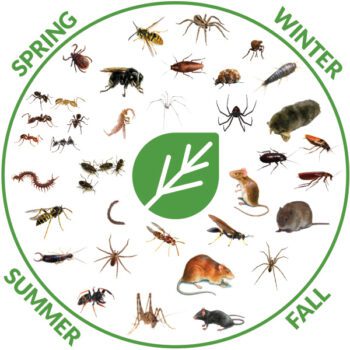
What are Seasonal Pests?
Seasonal pests in Colorado are insects that “occasionally” enter homes and other structures throughout the year, not just during the winter months. They usually enter homes in large groups, when the weather outside becomes too harsh (hot, wet, dry, or cold) for them to live comfortably. Colorado seasonal pests include, but are not limited to, Boxelder bugs, Conifer Seed bugs, Centipedes and Millipedes, Clover & Spider Mites, Earwigs, Miller Moths, Pill bugs, Springtails and Flies.

Boxelder bugs are black in color with three distinctive, reddish-orange stripes on their thoraxes. They range in size from 11mm to 14 mm long. When their wings lie flat, these stripes overlap to form what looks like a letter ‘X.’ The color red carries through to the edges of their wings and appears in their eyes, as well. Immature boxelder bugs, called nymphs, are bright red with black wing buds. Adults prefer to overwinter in dry, sheltered areas such as woodpiles, inside barns and sheds, or around window casements. Brightly colored and easy to see, boxelder bugs infest homes in large numbers when searching for refuge from cold winters. These seasonal pests are found primarily on boxelder trees as well as other maples and ashes. However, they are also known to gather on home exteriors on
sunny days and overwinter indoors.


Conifer Seed bugs vary in color from reddishbrown to greyish-brown with white markings. A key identifying feature is a white zigzag like line across the mid wings and alternating dark and white patches on both sides of the abdomen. They range in size from 15mm to 20 mm long. The best way to detect the presence of western conifer seed bugs is to look for them on nearby pine trees. They often crawl on pinecones between late morning and early evening looking for a meal. The pests also tend to gather on home exteriors around windows or doors in the fall as they seek to enter indoors.
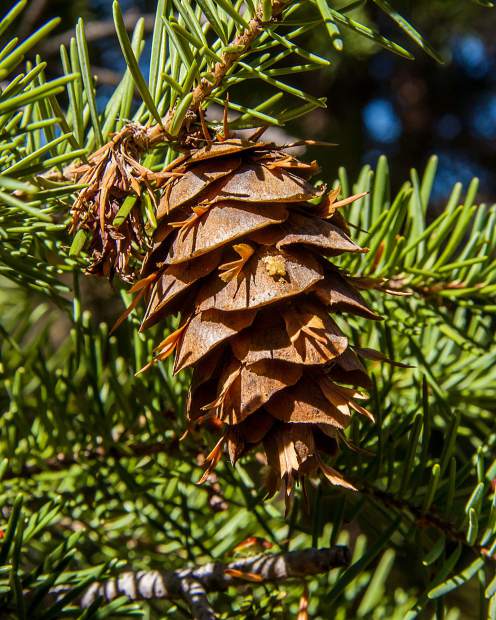


Centipedes have an elongated, worm-like body with one pair of legs per body segment. Centipedes are yellow to dark brown in color and some species also have darker colored markings. Centipedes have large, claw-like appendages containing venom that they use to paralyze their prey.
Millipedes are worm-like in appearance. They have cylindrical bodies that are dark brown or black in color and may have orange or red mottling. Millipedes curl into a tight ball when threatened. Depending on the size and species, they can have anywhere from 30 to well over 90 pairs of legs.
Clover/Spider Mites are reddish-brown, olive, pale orange, or even greenish-brown after feeding. They rarely exceed 0.25 mm in length. Clover mites live in and travel on grassy lawns. Adults congregate on vegetation and building walls, especially when exposed to sunlight. Clover mite eggs and nymphs can often be found in cracks in concrete, between building walls, under the loose bark of trees, under shingles, and in other protected areas. They infiltrate homes by taking advantage of the grass that brushes up against the exterior walls.

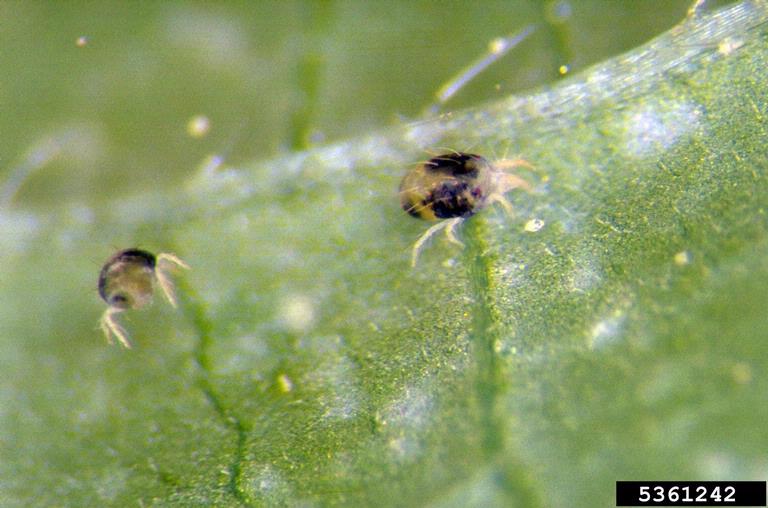


Earwigs are dark reddish-brown. They range in size from 5mm to 16mm in length. They have short, thick forewings that cover and protect their hind wings, and a prominent pincer-like appendage, called a cerci, at the tip of its abdomen. They seek out dark places rich in moisture, so outside they often rest under tree bark, leaves, vegetation, and mulched areas or beneath stones. On the inside, damp and dark basement areas with multiple cracks in the foundation provide perfect hiding places for earwigs. An infestation is not easily tackled, as earwigs release a pheromone in their feces to attract other earwigs to the spot. Even if you kill existing earwigs, more could be on the way. To be truly sure you’ve eradicated your earwig infestation, partner with a professional pest control service.
Miller moths are the adult stage of army cutworms found in crop fields in Kansas and Colorado. Army cutworm moths have a wingspan of 1.5 to 2 inches. It is generally gray or light brown with wavy dark and light markings on the wings. Army cutworms become full grown by mid-spring, burrow into the soil, and pupate. Pupation can occur as early as March or may extend into early May, depending on temperatures. Between three to six weeks later, the adult “miller” stage of the insect emerges. Next, they migrate and ultimately settle at higher elevations where they spend a few months, feeding on nectar and resting in sheltered areas. Miller moths avoid daylight and seek shelter before daybreak. Ideally, a daytime shelter is dark and tight. Small cracks in the doorways of homes, garages, and cars make perfect hiding spots. Insecticides have little or no place in controlling millers. The moths are not very susceptible to insecticides. Furthermore, any moths killed will be rapidly replaced by new moths migrating into the area nightly. Before miller moth migrations, seal any obvious openings, particularly around windows and doors. Also reduce lighting at night in and around the home during flights. This includes turning off all unnecessary lights or substituting non-attractive yellow lights.
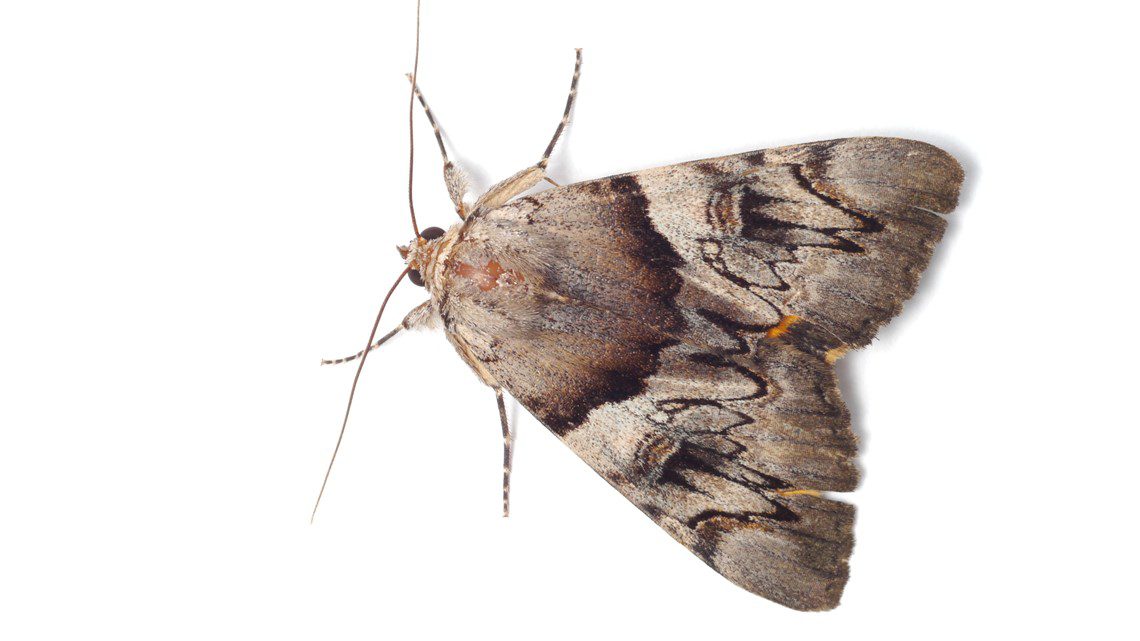

Pill bugs are often mistaken for beetles, but in fact, they are the only land-living crustaceans. They are relatively small, growing to be no larger than about 1.5cm in length and they have a segmented outer shell that allows them to roll up into a ball when threatened. They can resemble a rounded pill, which is where they get their name, and they are often referred to as "roly-polies" because of this behavior. While pill bugs aren’t dangerous to humans, they can become a nuisance in your home or garden. Pill bugs prefer to live under piles of rocks, leaves, and other organic debris or in basements, under leaky sinks, and in laundry rooms. The pests require moist, humid conditions in order to survive. Without moisture, the lifespan of pill bugs significantly decreases.
Springtails are dark grey to whitish and vary in size from 1mm to 3mm long. They have three pairs of legs, no wings, and short antennae. At the tip of their abdomen, they have an extension known as a furcula, which looks like a long clasp folding underneath the body. In threatening situations, the furcula acts as an ejector seat, launching the springtail safely into the air, hence the name. They play an important role in the health of soil ecosystems by helping to break down decaying plant material and other organic matter. Springtails also feed on fungi, algae, bacteria, pollen grains, and even other springtails. Although springtails are nocturnal, they are attracted to light, making them a common intruder in human dwellings. They are able to easily enter houses through any cracks or crevices, such as around doors, utility pipes, window screens, or gaps between siding and baseboards.
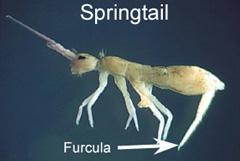
An adult fly has three body parts: head, thorax and abdomen. The color and body size varies depending on species; most are small in size, typically measuring no more than 10mm long. The head has a pair of compound eyes, a pair of antennae, and variously modified mouthparts. The thorax is the locomotor center; it bears a pair of functional membranous wings used in flight and three pairs of functional legs. Flies start life as eggs, which hatch into tiny, whitish, legless larvae, also known as maggots. These larvae then become pupae, enclosed in hard shells (puparium) from which they eventually emerge as adult flies. Once fully grown, the life expectancy of a fly can be from eight days to two months, or in some cases, up to a year. One pair of mating flies can produce more than 1 million offspring in as little as six to eight weeks. Flies generally live within close proximity to suitable food sources and breeding grounds. They feed on various food substances; however, most of the flies found in and around buildings feed and breed in warm, moist decaying organic matter. Small flies such as drain flies, fungus gnats, and phorid flies are commonly found in and around drains, leakages in slab floors, shower pans, sinks, and overwatered potted plant soils. Fruit flies tend to breed in decaying fruits and vegetables. Meanwhile, filthy flies such as house flies, dung flies, blow flies, bottle flies, and flesh flies visit and breed in garbage, trash bins, piles of compost or manure, and the carcasses of animals. Flies are attracted to light, so they often gather around windows when inhabiting indoor areas. Some fly species such as blow, and bottle flies are known to fly long distances of up 20 miles in search of food and breeding sites.
As many as 33 million microorganisms may flourish in a single fly’s gut, while a half billion more swarm over its body and legs. Flies can easily spread disease, because they move quickly from rotting, disease-laden garbage to exposed foods, food prep surfaces and utensils. More than 100 pathogens are associated with the house fly including salmonella, staphylococcus, E. coli and shigella. These can cause typhoid fever, cholera, bacillary dysentery, hepatitis, ophthalmia, polio, tuberculosis and infantile diarrhea. However, for every fly you see, there are an estimated 19 more flies hidden from view. If you are concerned you have a fly infestation, the best way to deal with it is to get the help of a professional pest control service who can accurately identify the species.
Are seasonal pests dangerous?
Most seasonal pests are thought of as merely nuisance pests and pose no real danger to people or property. Flies are considered to be dangerous because they contaminate food and transmit diseases.
Why do I have a seasonal pest problem?
Seasonal pests often become a problem for homeowners when the weather outside becomes too hot and dry for them to live comfortably. They find their way inside by entering under doors and through spaces around windows. Outdoor lighting attracts them to the exterior of your home or business, where they will then find their way inside through small gaps in the foundation. Flies typically find their way inside while foraging for food, taking advantage of structural openings.
Where will I find seasonal pests?
Where seasonal pests live and nest depends on the species. Millipedes, centipedes and springtails live outside in damp, dark areas like under landscaping ties, mulch, rocks, and woodpiles. Inside, they are usually found in humid areas of a home or business such as basements or crawlspaces. Flies are generally found outside around compost bins and trash cans, gardens, outdoor eating areas, and on animal excrement. Indoors, they are seen flying around bathrooms, kitchens, and pantry areas.
How do I get rid of seasonal pests?
The best way to eliminate seasonal pests from your Colorado home is to partner with a local pest control expert. At Affordable Pest Control, we are committed to providing each of our customers with superior pest control services to meet their individual needs. Our experienced and knowledgeable technicians always perform the most advanced, effective services. To learn more about working together to rid your home or business of occasional invaders, contact Affordable Pest Control today!
How can I prevent seasonal pests in the future?
The following tips can help you to protect your Colorado home or business from becoming overrun with seasonal pests:
- Cut tree branches, shrubs, and bushes away from the exterior of your home.
- Seal openings in the foundation and exterior walls.
- Place weather stripping around windows and doors.
- Place door sweeps on doors.
- Keep tight-fitting or locking lids on outdoor trash cans and compost bins.
- Reduce moisture levels by using dehumidifiers and fixing leaky pipes.
- Pick up fallen fruits and vegetables in garden areas.
- Keep food in the refrigerator or air-tight containers.
- Regularly remove trash from your home.
- Avoid using unfinished or bare wood in your home.
Request Your Free Inspection
Complete the form below to schedule your no obligation inspection.
